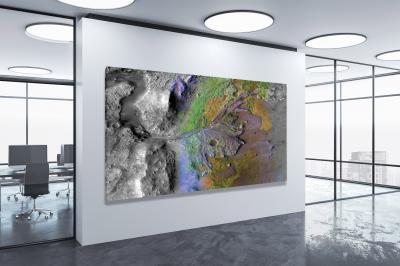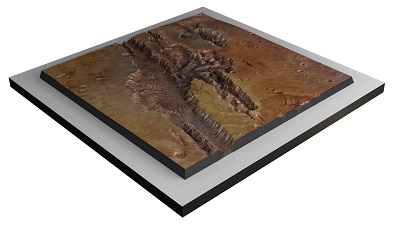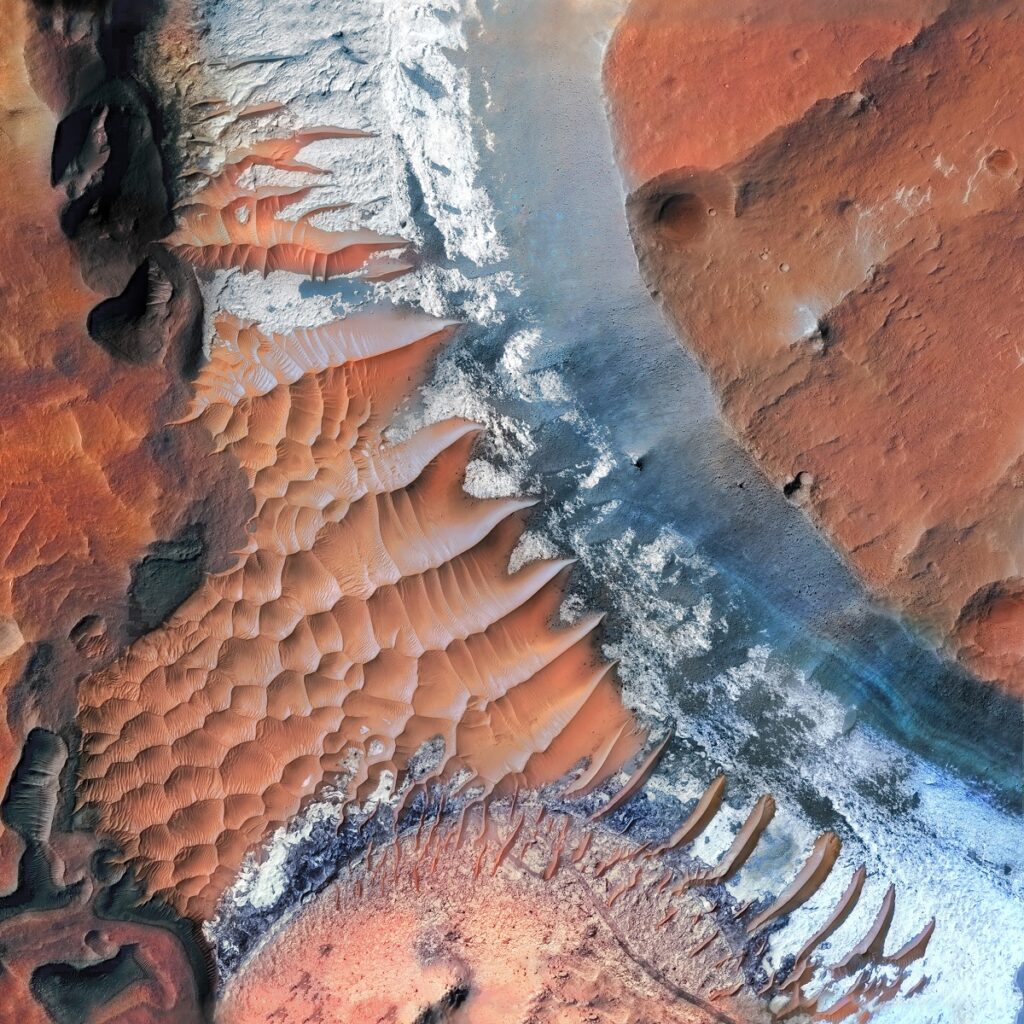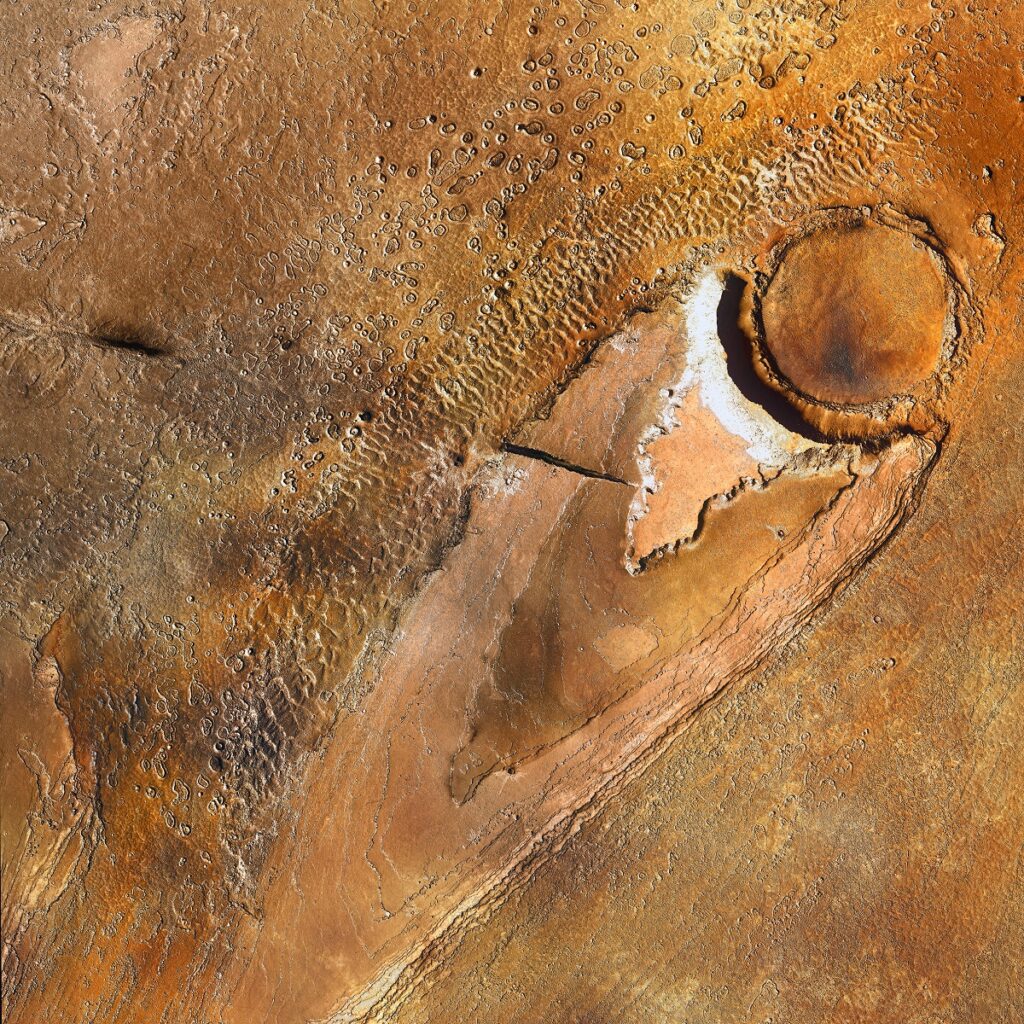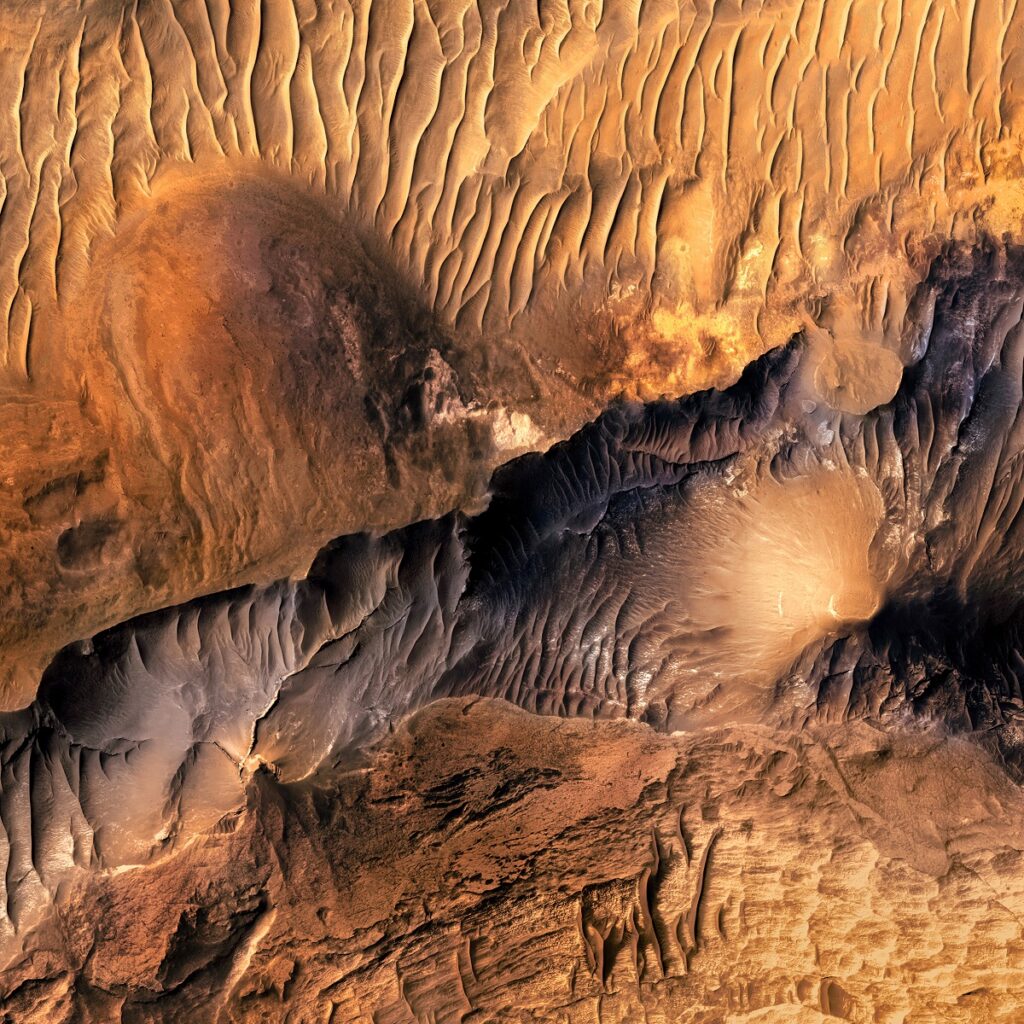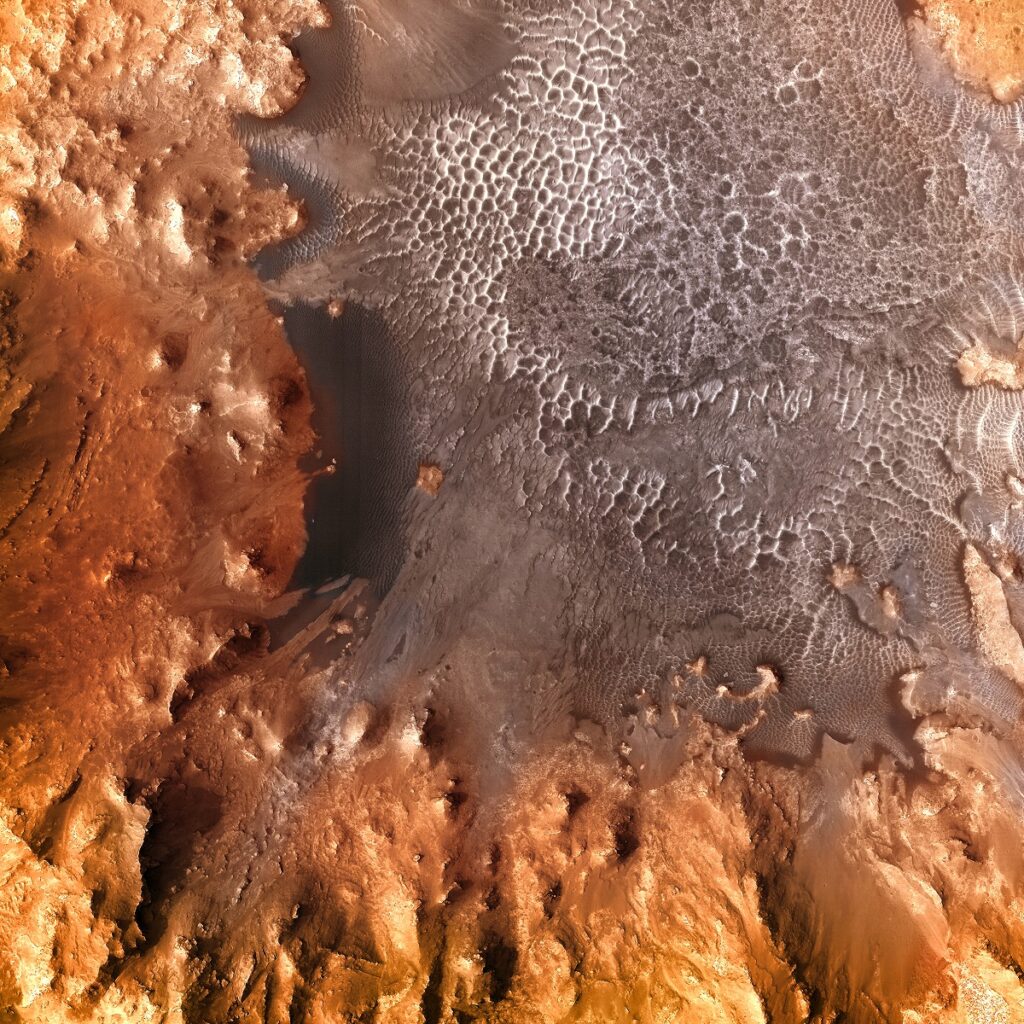Olympus Mons
Olympus Mons
We Build Custom 8K Mars Canvas Prints of Olympus Mons
Olympus Mons
Olympus Mons is an awe-inspiring geological marvel that has long captured the rapt attention and curiosity of scientists, explorers, and the general public around the world. Not only is it the tallest volcano, but it also holds the distinction of being the largest shield volcano anywhere in the entire solar system. Its towering presence and massive scale provide an unparalleled natural laboratory that has far-reaching implications for a multitude of scientific domains. This colossal formation deepens our understanding of planetary geology, offers invaluable insights into the intricate geological and climatic history of Mars, and serves as a keystone for studying the underlying mechanisms that drive volcanic activity on both Mars and Earth.
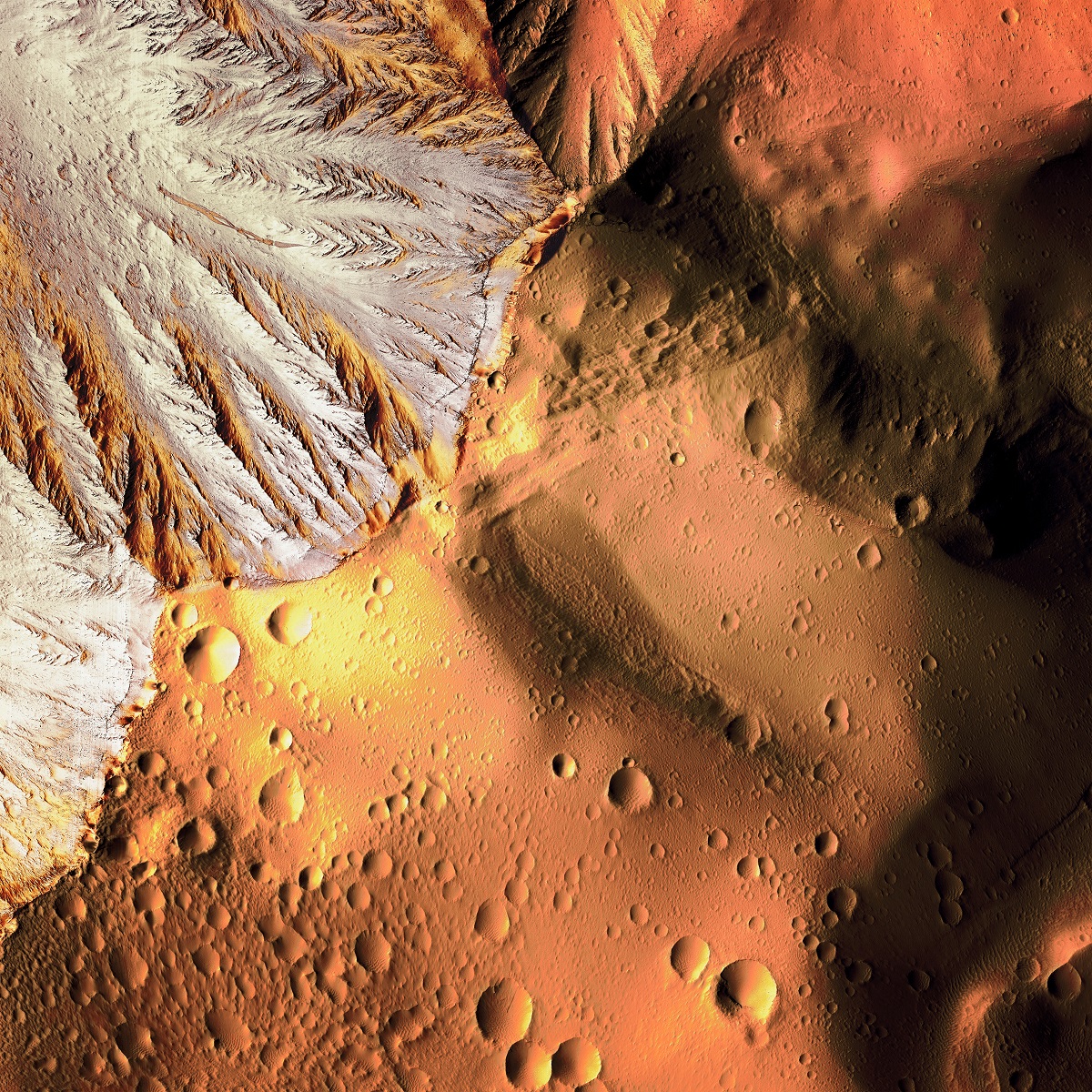 Olympus Mons
Olympus Mons
Historical Context
Olympus Mons, the towering shield volcano on Mars, has been a point of fascination and study since its discovery, shedding light on the geological and morphological aspects of the Red Planet. The historical journey of this colossal volcano traces back to the early days of planetary astronomy and has intertwined with the evolution of astronomical technology and space exploration.
Early Observations
The discovery of Olympus Mons is attributed to the astronomers of the late 19th and early 20th centuries, who were surveying Martian surface features. Although their telescopic observations were primitive by today’s standards, some astronomers noted irregularities on Mars’ surface that hinted at the presence of large geological formations.
Mariner Missions
The Mariner missions in the 1960s and 1970s provided the first close-up images of Mars, revealing a variety of surface features including large volcanic plateaus. These missions laid the groundwork for later studies and observations, offering a preliminary glimpse into the diverse Martian landscape.
Viking Program
It was NASA’s Viking Program in the late 1970s that unveiled Olympus Mons’ true dimensions and characteristics. The Viking orbiters captured detailed images of the volcano, allowing scientists to study its structure, composition, and scale, establishing it as the largest volcano in the solar system.
Scientific Advancements and Exploration
Subsequent missions and advancements in astronomical technology have augmented our understanding of Olympus Mons. High-resolution imaging, topographical studies, and spectroscopic analyses have unraveled intricate details about its geological history, formation, and the potential it holds for unraveling Mars’ past. The continuous exploration of Mars through rovers, landers, and orbiters has consistently refined our knowledge of Olympus Mons.
Naming of Olympus Mons
The name “Olympus Mons” is derived from Latin, translating to “Mount Olympus,” bearing symbolic resonance with the abode of the gods in ancient Greek mythology. This nomenclature reflects both the grandeur and the mystique associated with this colossal Martian feature.
Geographical Location
Olympus Mons, the colossal Martian shield volcano, is strategically situated in the western hemisphere of Mars, precisely at coordinates of approximately 18.65°N latitude and 226.2°E longitude. This behemoth forms an integral part of the Tharsis Montes volcanic plateau, a region teeming with remarkable geological landmarks. Stretching over a staggering 300,000 square kilometers, Olympus Mons is comparable in area to the U.S. state of Arizona, and, remarkably, it eclipses the combined size of all the Earth’s volcanoes. The altitude of this monumental volcano is nothing short of awe-inspiring, as it stands approximately 22 kilometers above the mean surface level of Mars. To offer some Earthly perspective, this makes Olympus Mons nearly triple the height of Mount Everest when measured from its base, drastically overshadowing all other planetary elevations we are familiar with.
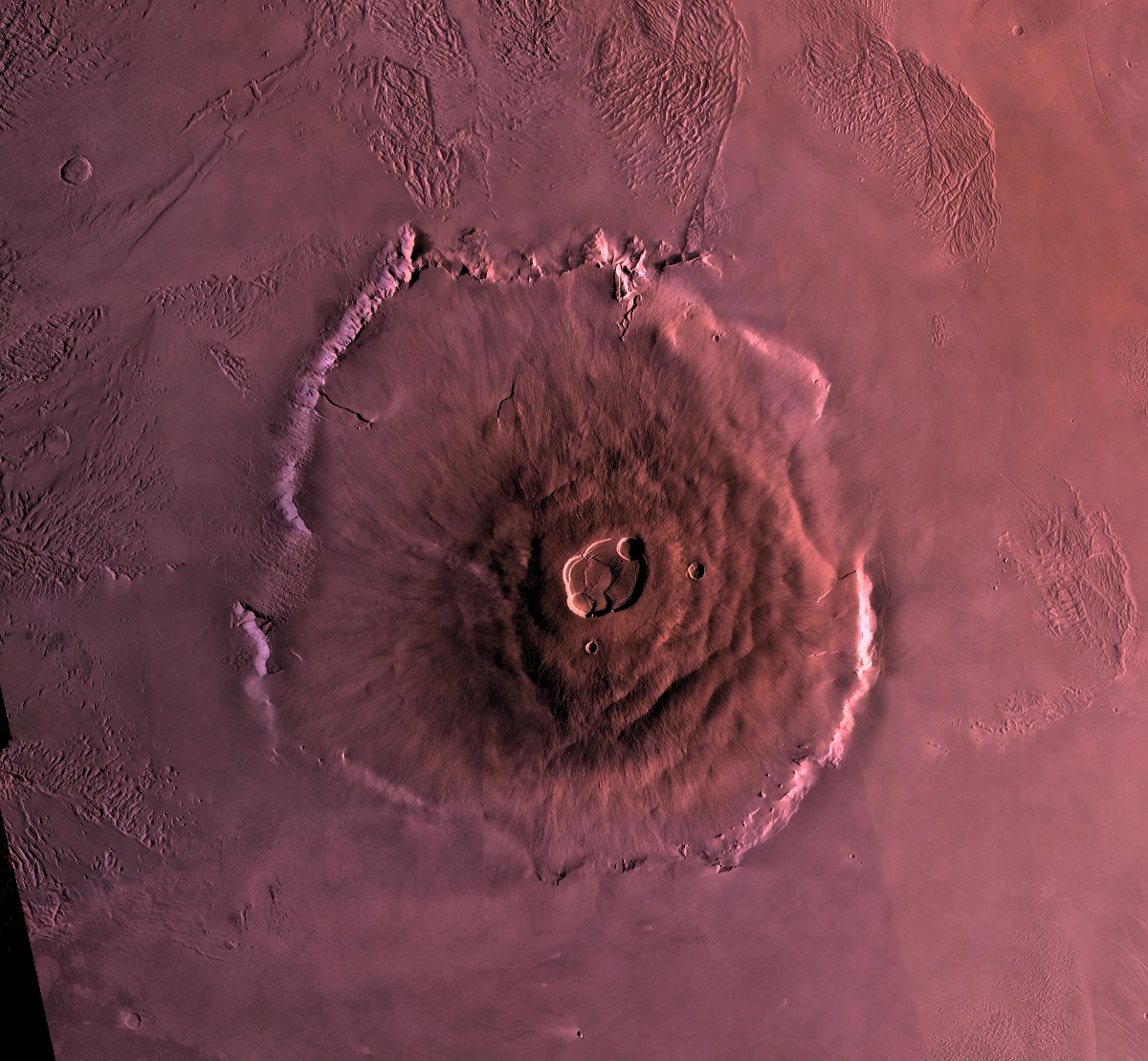 Olympus Mons
Olympus Mons
Comparative Analysis of Olympus Mons
Olympus Mons, with its towering height and extensive diameter, is a celestial giant in comparison to other notable geological formations across our solar system. This section aims to contrast Olympus Mons with similar terrestrial and extraterrestrial features, including Earth’s volcanoes and other large shield volcanoes in our solar system.
Dimensional Analysis
Olympus Mons, being the largest volcano in the solar system, stands approximately 13.6 miles (22 km) high, significantly dwarfing the highest volcano on Earth, Mauna Kea, which rises about 6.3 miles (10.2 km) from the ocean floor, but only about 2.5 miles (4 km) above sea level. The base diameter of Olympus Mons is around 370 miles (600 km), enveloping an area comparable to the size of the state of Arizona, whereas Mauna Kea has a diameter of about 74 miles (120 km).
Formation and Composition
The formation of Olympus Mons is attributed to the hot spot volcanic activity, similar to that of the Hawaiian island chain on Earth. However, unlike Earth, Mars does not have tectonic plates, which means Olympus Mons remained stationary over its hot spot, allowing it to grow to its enormous size. The terrestrial counterparts, due to the movement of tectonic plates, are unable to achieve the same continuous build-up.
Slope Analysis
The shield volcano nature of Olympus Mons, comparable to the Hawaiian volcanoes, means it has shallow slopes formed by the accumulation of lava flows. However, the slopes of Olympus Mons are much gentler, with an average slope of only 5 degrees, compared to Mauna Loa’s 12 degrees.
Caldera Complexity
Olympus Mons hosts a complex caldera, consisting of multiple overlapping calderas, which are depressions formed due to the collapse of the chamber roof following the depletion of the magma chamber. In contrast, many Earth-based volcanoes typically feature a single, less complex caldera.
Extraterrestrial Comparisons
Beyond Earth, Olympus Mons is also substantially larger than any other known volcano in our solar system. For instance, the large shield volcano Alba Mons, also located on Mars, has a much broader base but is not nearly as high. Additionally, Ascraeus Mons, another Martian volcano, is one of the tallest in the solar system but falls short in comparison to Olympus Mons.
Geological Composition
Olympus Mons serves as a spectacular showcase of Martian volcanism. It is fundamentally constructed from basaltic lava flows, confirming its volcanic nature. But this is not merely a monolithic structure; rather, it is a complex tapestry of geological stories written in rocks and minerals. Spectroscopic analyses from multiple scientific missions have disclosed a diverse mineralogical portfolio comprising pyroxenes, olivines, and iron oxides, among others. This rich array implies various magmatic sources and indicates different stages in the volcano’s evolutionary saga. The volcano’s intricate geological timeline is evident in its stratification—layer upon layer of lava flows have accumulated over countless Martian years, with each layer contributing unique details to our understanding of the volcano’s long and varied history. The summit of Olympus Mons is adorned with a complicated caldera system and fissure vents, providing compelling evidence of a dynamic past replete with multiple episodes of volcanic eruptions interspersed with periods of dormancy.
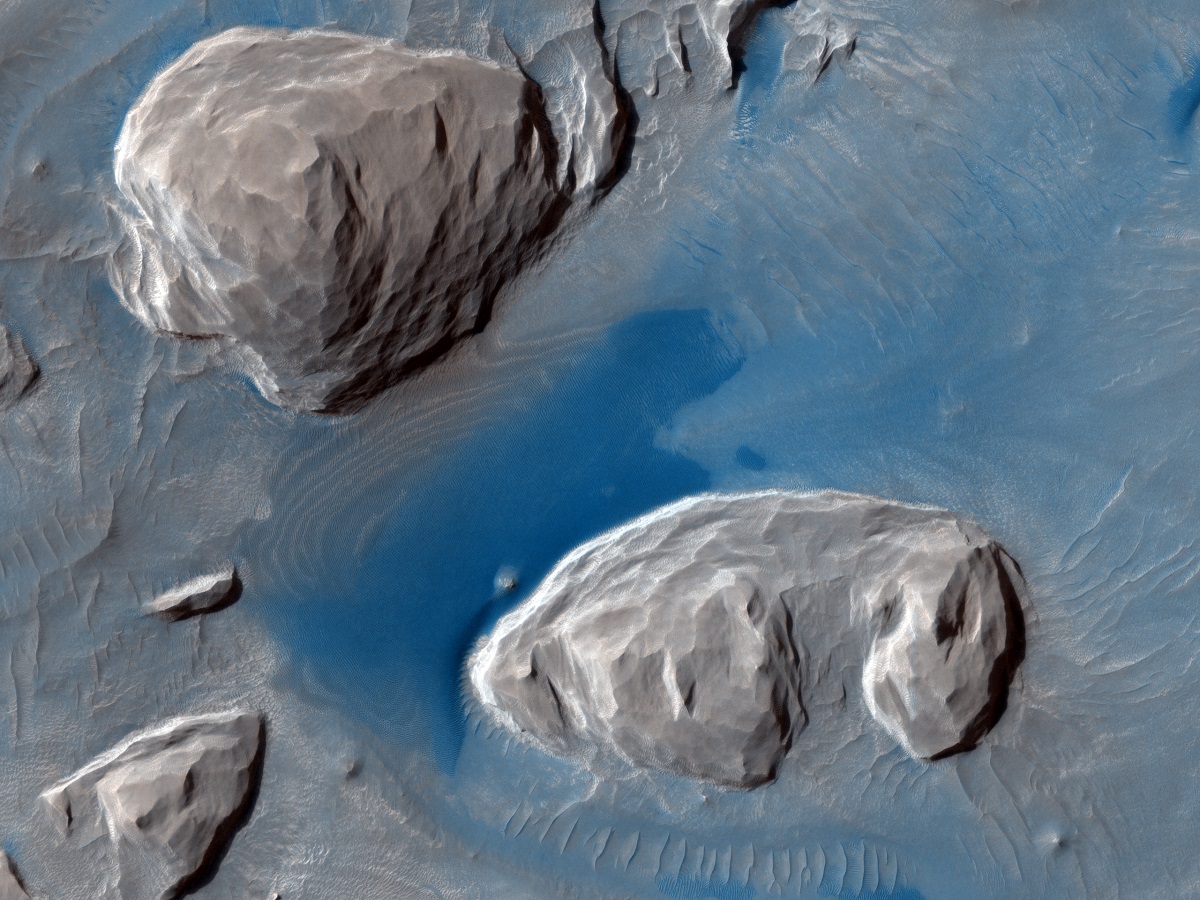 Olympus Mons-Nearby Dark Spot
Olympus Mons-Nearby Dark Spot
Significant Discoveries
Size and Scale
The mammoth dimensions of Olympus Mons have turned our previous notions of planetary volcanism on their heads. The volcano’s sheer scale and volume have not just piqued curiosity but have also fundamentally revolutionized how scientists think about the forces that can sculpt planetary bodies on this grandiose scale.
Geological Layers
The exposed strata of Olympus Mons serve as a geological archive, elucidating the temporal sequences of Martian geology. These stratified layers offer a palette of varying compositions and thicknesses, suggesting shifts in environmental conditions and diverse styles of volcanic eruptions over the planet’s history.
Possible Ancient Lava Tubes
Intriguingly, researchers have identified peculiar features that strongly hint at the existence of ancient lava tubes. Should these features be confirmed, their presence could be transformative for future human missions to Mars, offering potential underground habitats or rich deposits of untapped resources.
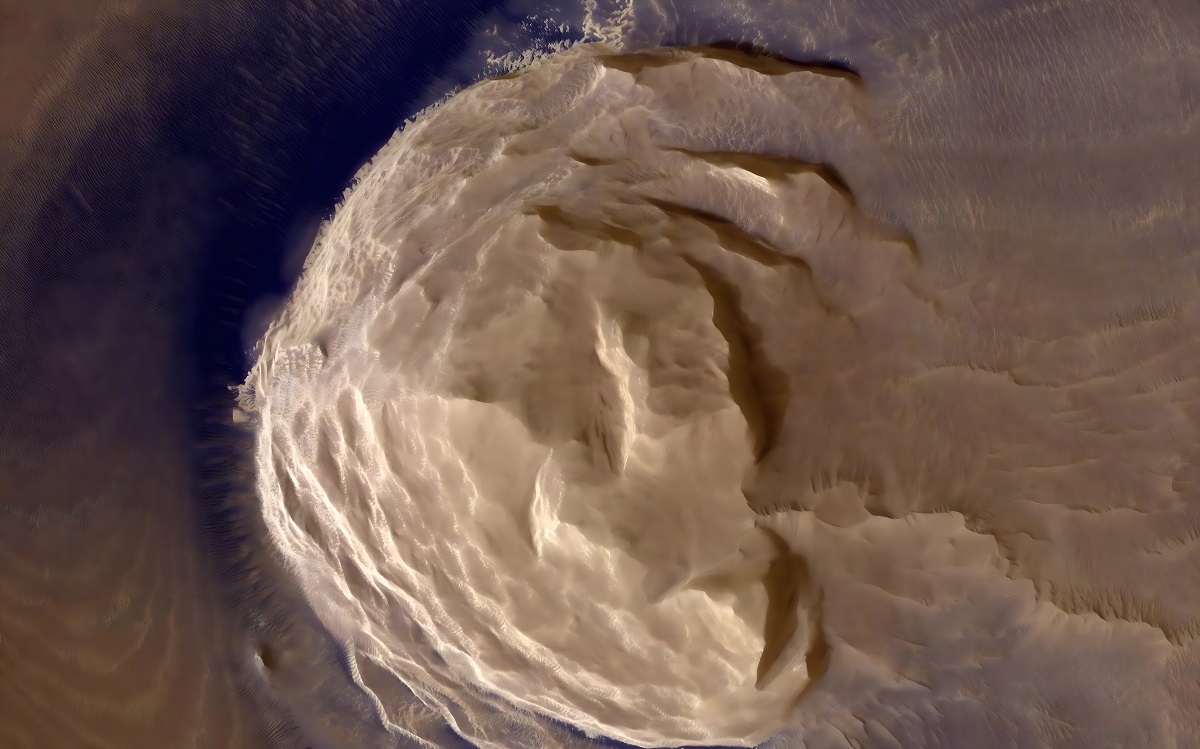 Dark Materials on Olympus Mons
Dark Materials on Olympus Mons
Scientific Missions
Mariner Missions
The Mariner spacecraft were among the first robotic explorers to provide us with initial, albeit low-resolution, images of Olympus Mons. These pioneering missions laid the essential foundation for the comprehensive studies that would follow.
Viking Program
The Viking orbiters dramatically shifted the landscape of our understanding by producing the first high-resolution images of Olympus Mons. These images were groundbreaking, offering an unparalleled view of the volcano’s gargantuan size and intricate geological composition.
Mars Global Surveyor
The Mars Global Surveyor, equipped with state-of-the-art topographic instruments, furnished scientists with unprecedented three-dimensional models of Olympus Mons, thereby deepening our understanding of its geological structures and features.
Mars Reconnaissance Orbiter
The Mars Reconnaissance Orbiter’s contribution to the study of Olympus Mons cannot be overstated. The high-resolution imagery and rich spectroscopic data gathered by this mission have been instrumental in mapping out the volcano’s complex geological and mineralogical composition in striking detail.
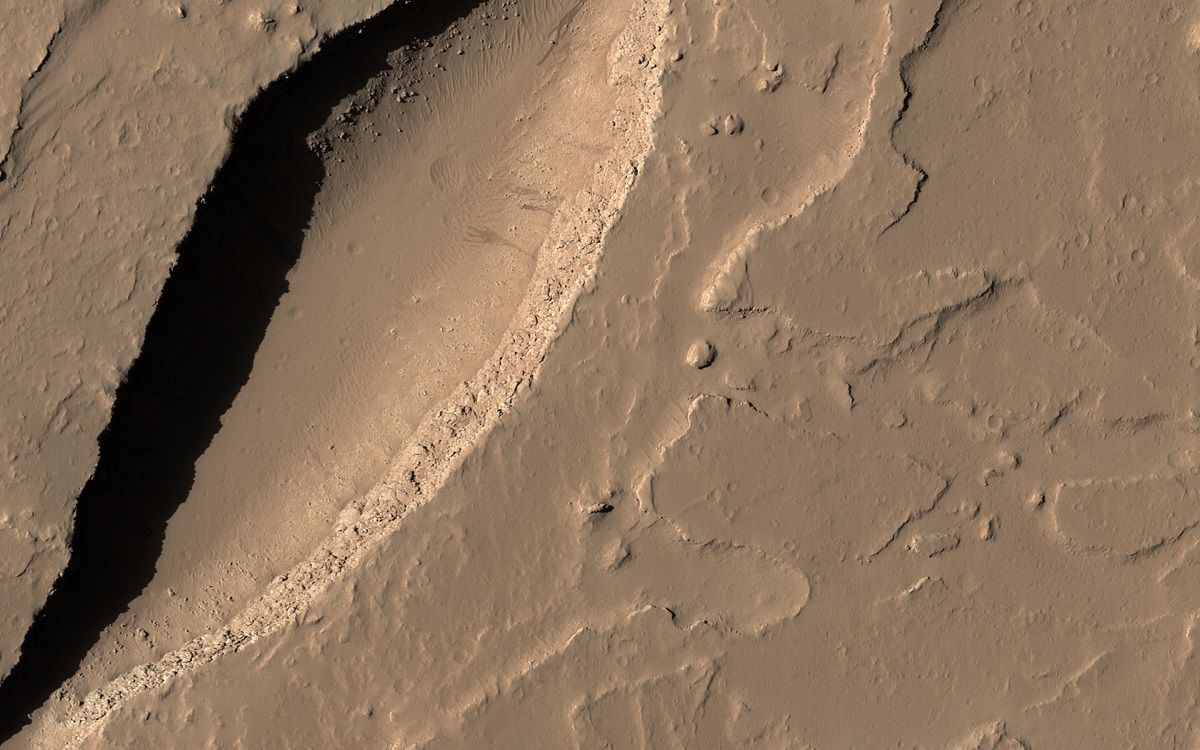 Olympus Mons Volcanic Fissure
Olympus Mons Volcanic Fissure
Geomorphological Features
The geomorphology of Olympus Mons presents an incredibly diverse tableau of geological artistry. The dominant feature is the vast shield volcano, characterized by its wide, gently sloping flanks, shaped by the flow of highly fluid lava over extended periods. The summit is adorned with a multi-faceted caldera system featuring multiple overlapping craters, a vivid testament to the region’s turbulent volcanic activity. The sides of Olympus Mons also boast several fissure vents and features that suggest the presence of ancient lava tubes. Adding to the geomorphological richness is the base of the volcano, encircled by enormous cliffs or scarps. These have been formed by the tremendous weight of the mountain causing the Martian crust to slump, offering yet another compelling geomorphological aspect for study.
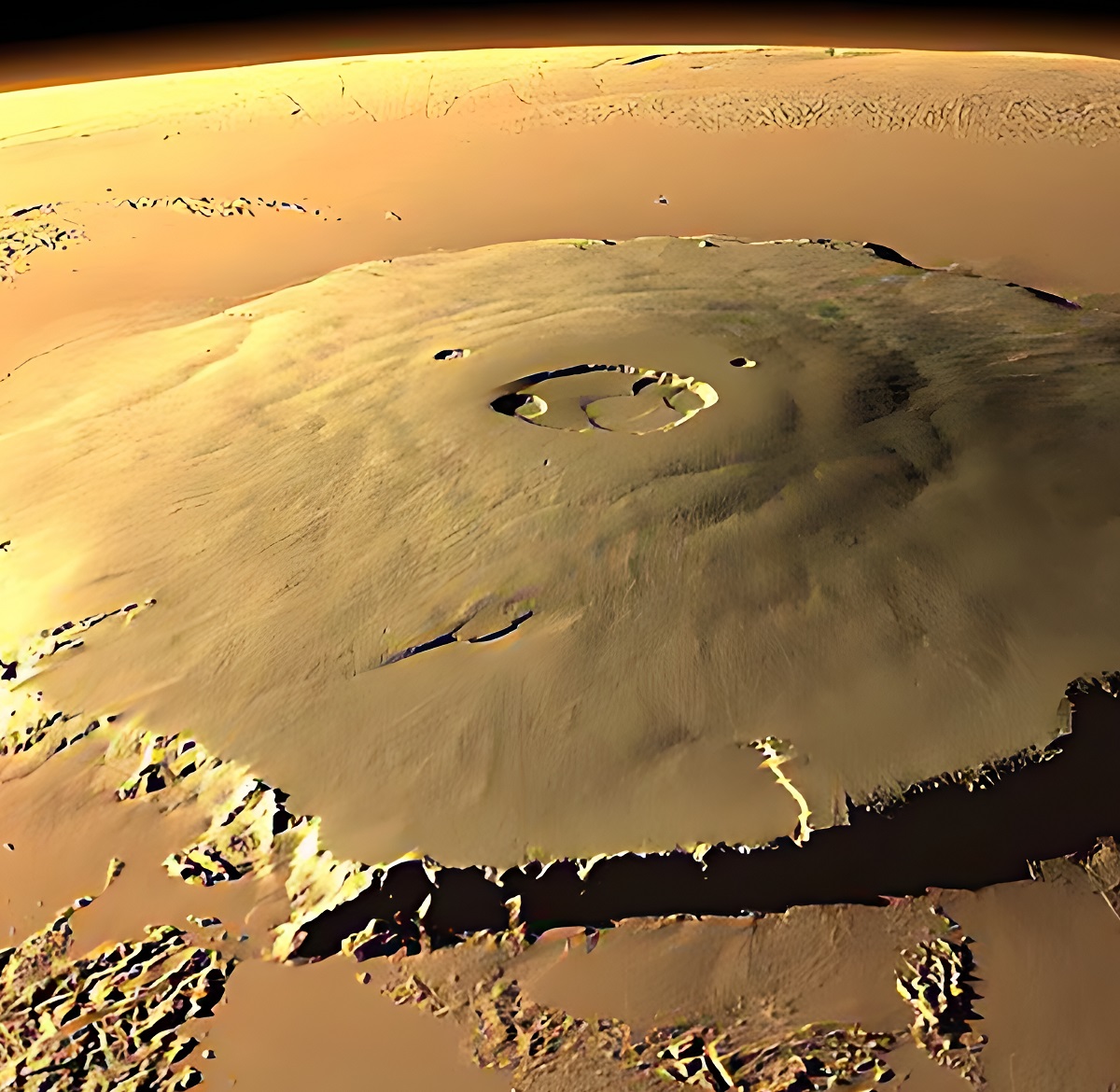 Olympus Mons Volcano
Olympus Mons Volcano
Olympus Mons is a marvel to the dynamic geological forces at work on Mars. As the largest volcano in the solar system, it offers unparalleled opportunities to study volcanic processes, planetary formation, and even the potential for future human exploration. Scientific missions have only begun to scratch the surface of this colossal feature, and future missions promise even more tantalizing discoveries. The study of Olympus Mons is not just the study of a single mountain; it is a journey into understanding the broader geological phenomena that have shaped not just Mars, but planetary bodies across our solar system.
Check out our 3D Mars Learning Center for more information on Mars and Olympus Mons. You can also learn more at: NASA Mars Exploration.
More About Mars
Contact us today to learn more about our 3D services and how we can help you achieve your goals.
